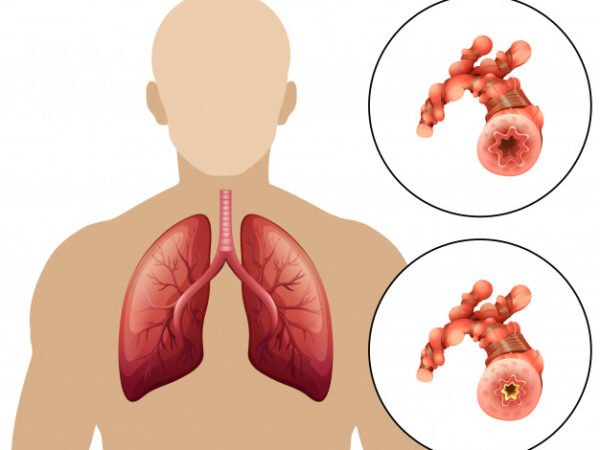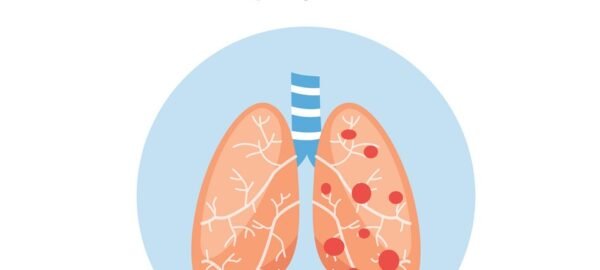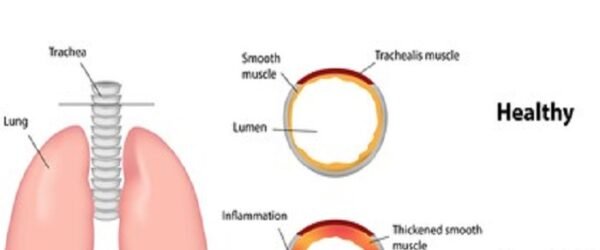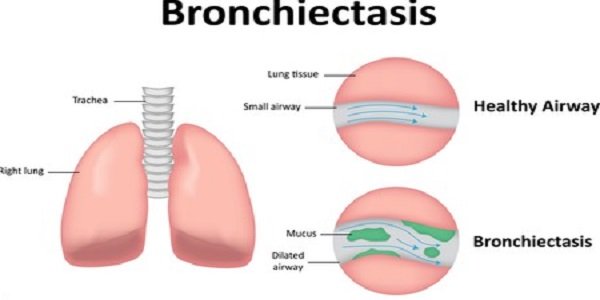Chronic Obstructive Pulmonary Disease (COPD)
Keywords: Reactive airway disease, Chronic obstructive lung disease, Emphysema, Chronic Bronchitis
What is COPD?
Chronic Obstructive Pulmonary Disease (COPD) is a group of progressive lung diseases that block airflow and make it difficult to breathe. Most people who suffer from COPD have emphysema and chronic Bronchitis. Symptoms of COPD are shortness of breath and cough with mucus. At the beginning, symptoms may be mild, and the patient feels difficult to breathe during exercise. Eventually, symptoms gradually become worse. The patient feels more difficulty breathing during sitting and lying conditions. COPD alone causes 3.17 million deaths globally that are nearly 5% of the deaths. In post-COVID infection cases, there is also a potential risk of developing permanent damages of lungs, thus causing COPD.
Tobacco smoking is a primary cause of COPD. Most of the people who smoke cigarettes regularly in their lives frequently develop COPD. The risk of COPD increases if the patient has chronic asthma. Adults older than 40+years are more affected with COPD, especially those who have at least some history of smoking.

When anxiety becomes a disorder?
Cause of COPD
- Tobacco smoking
- Second-hand smoke
- Prolonged exposure to air pollutants, dust
- Long term exposure to chemical and fumes in the workplace.
- Homes are often poorly ventilated
- Inhalation of fumes from burning fuel used in cooking.
- An infectious disease that destroys lung tissue in patients
- Atopic/ allergic conditions leading to bronchial asthma
What are the symptoms of COPD?
Early symptoms of COPD
- Shortness of breathing during exercise.
- Cough with mucus
- The patient clears a lump of mucus from the lungs in the morning.
COPD symptoms at the mid-way of advancement
- The patient feels more difficulty breathing even when sitting and lying down.
- Chronic cough with a large amount of mucus
- Chest tightness and discomfort
- Tendency to clear mucus from your lungs frequently
- Wheezing sound while breathing
- Lack of energy
- Fatigue
- Respiratory infection
Advance stage of COPD
- Swelling of feet, ankles or legs
- Weight loss.
What are the types of COPD?
Emphysema
Chronic Bronchitis
Bronchiectasis
Let us get a better understanding of these conditions in simple terms.

Emphysema:
it’s a disease of the lung, where the air sac is damaged. The inner wall of air sacs (alveoli) weaken and rupture. That makes a larger air space instead of many small ones. Thus the surface area of the lungs available for gaseous exchange gets reduced, leading to chronic breathing difficulty and associated symptoms. As a compensatory mechanism, the lungs become larger, and ultimately it becomes more difficult to breathe. Smokers are the primary sufferers.
Chronic Bronchitis:
it is inflammation and irritation of bronchial tubes. Which makes you cough more and creates more mucus. Chronic bronchitis symptoms are cough with a large amount of mucus and shortness of breathing it last three month for two years in a row. The chronic productive cough with the tightness of the chest and wheezing and aggravation during winter is the hallmark of the diagnosis.


Bronchiectasis:
it is the permanent enlargement of parts of the lungs or airway due to chronic inflammation and infection- like a history of chronic lungs infection, pneumonia, tuberculosis etc. In this type, the patient presents with chronic cough with greenish-yellow sputum, which may last for months. At times bronchiectasis may present as a dry cough with coughing up of blood. This condition can be managed symptomatically only as the permanent enlargement of the parts of the airway never comes back to normal.
How is COPD diagnosed?
The doctor will primarily evaluate COPD by asking you questions related to your habits such as smoking, aggravating factors and lifestyle. Some test is required to rule out the disease other than COPD. Such as:
- Spirometry test or Lungs function test- to evaluate the quantity of air you inhale, the quantity of air you exhale, volume and how quickly you can exhale it. This test gives a fair idea of the condition and prognosis of the patient’s lung condition.
- A chest x-ray can show emphysema and other essential features of COPD.
- C.T. scan of your lungs can help you to detect emphysema.
- An arterial blood gas test measures the oxygen levels in your blood.
Bronchoscopy- This is seldom done to evaluate the physical damages that occurred to the bronchus etc. Sometimes biopsies are also taken in doubtful cases.
What are the risk factors?
- Exposure to air pollution
- If a person has a history of childhood respiratory infections
- Working with chemical, fumes and dust area.
- cigarette smoking
- Breathing second-hand smoke
- Genetic factors
How can one manage the condition?
- Never start smoking or stop it if you already started
- Avoid second-hand smoke
- Regular physical activity
- Avoid food or substances which are allergens or precipitate an acute attack.
How does Homoeopathy become beneficial in cases of COPD?
It is to be noted that as per W.H.O. “Chronic obstructive pulmonary disease is not curable“. So the prime role of any therapy is to prevent the severity of attacks, reduce the frequency of attacks, and improve patient’s quality of life. And, that too without any steroids.
Homoeopathic treatment is effective in treating COPD. Homoeopathic medicines can control the further destruction of tissues in the lungs and prevent the obstruction of bronchioles, thus helps significantly to avoid the complications of the disease. Some frequently used medicines are Bryonia, Rumex, Drosera, Phosphorus, Ammon Carb, Carbo veg, Arsenic Album, etc.
However, we never advise anyone to experiment with homoeopathic medicine unknowingly, as self-prescription can prove harmful. Parents are not encouraged to self-prescribe any Homeopathic medications without consulting an appropriately qualified doctor from a recognized university.
So, why wait? Get a consultation with a qualified and experienced Homeopath today from the comfort of your home through Let’s Homeopathy and experience the goodness of Homoeopathy. We will deliver the medicines to your doorstep too!